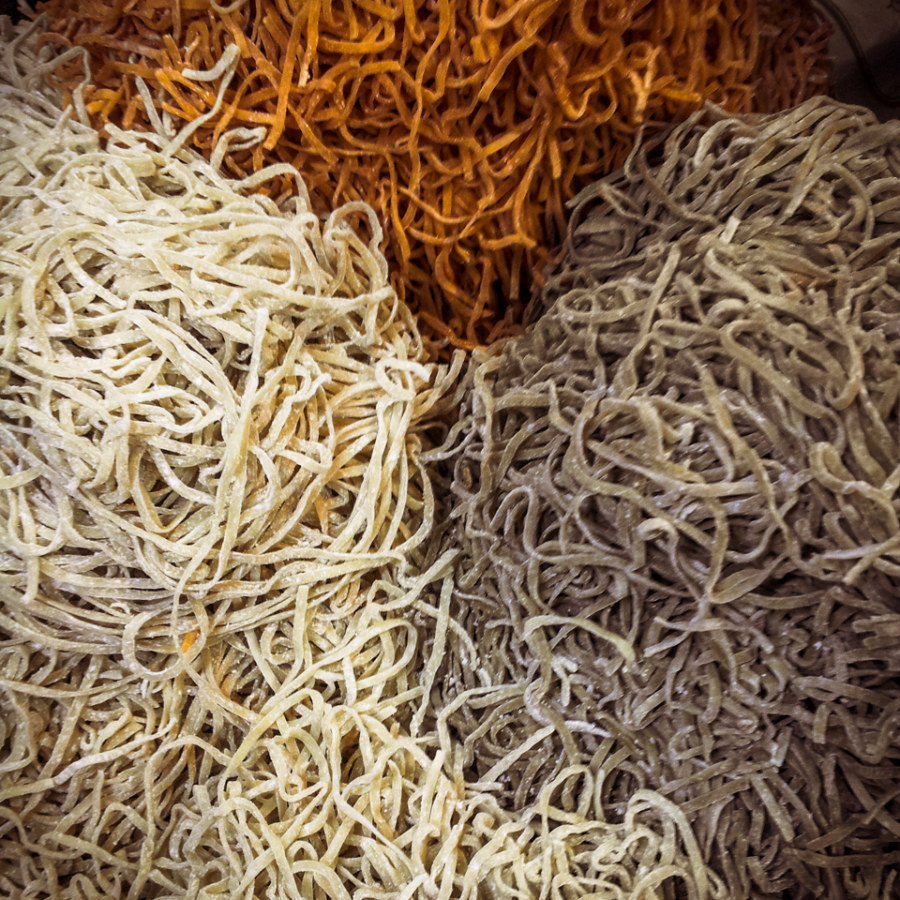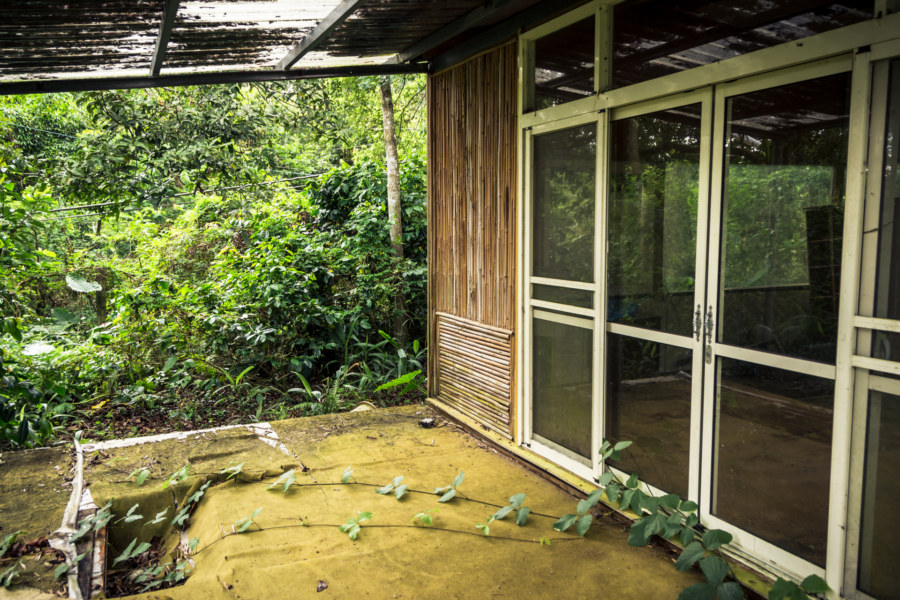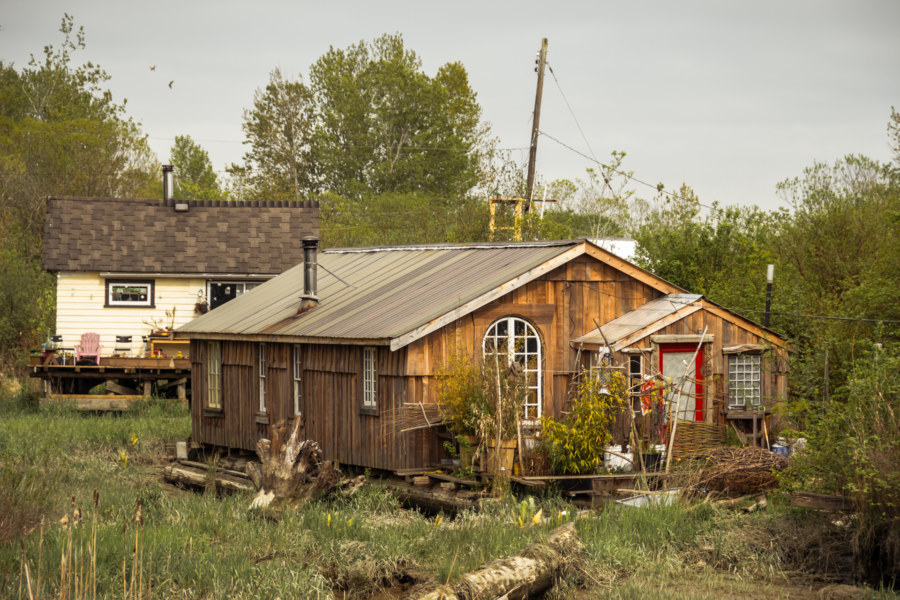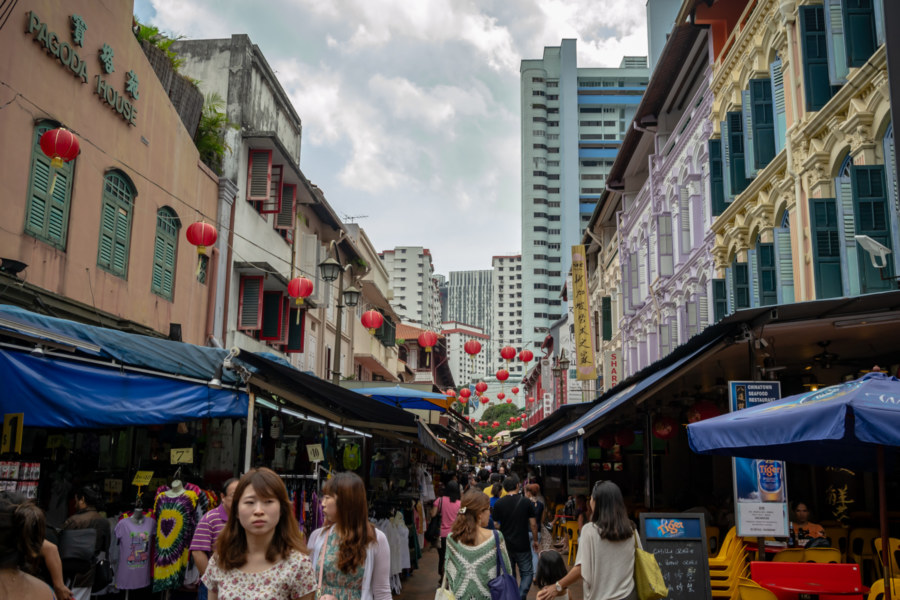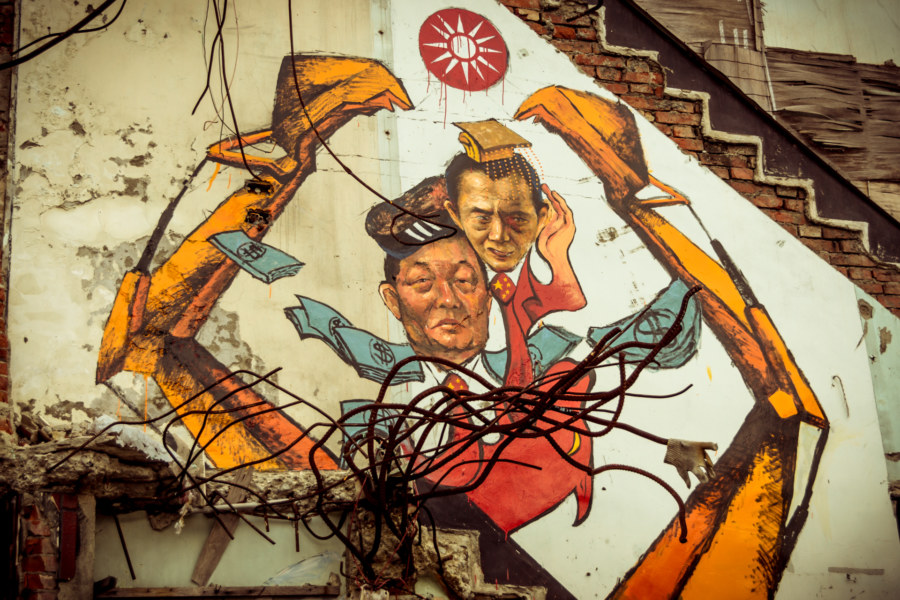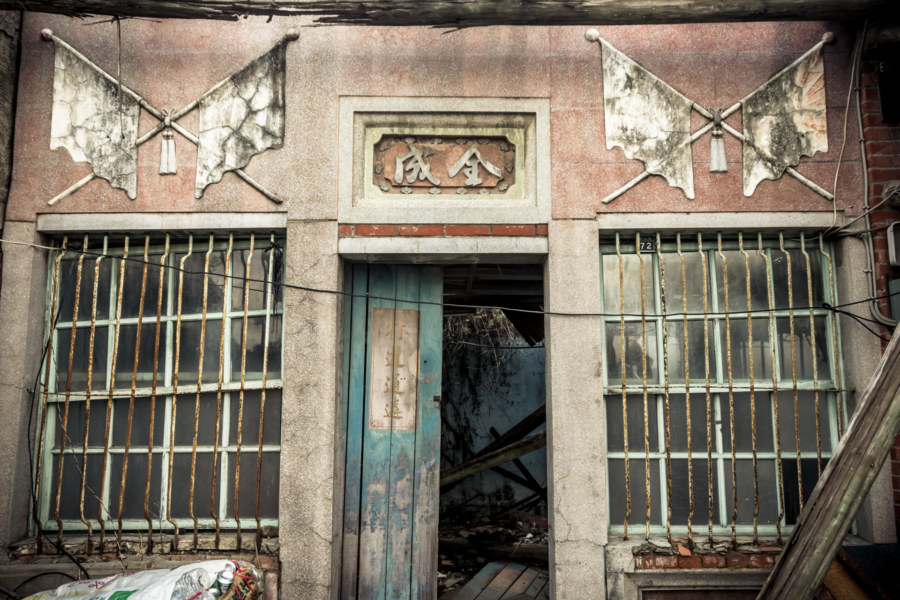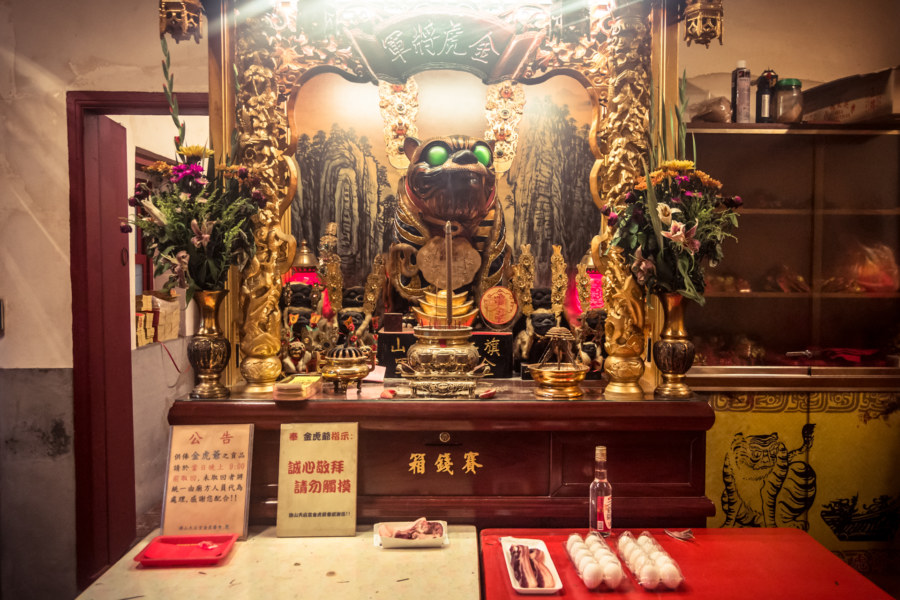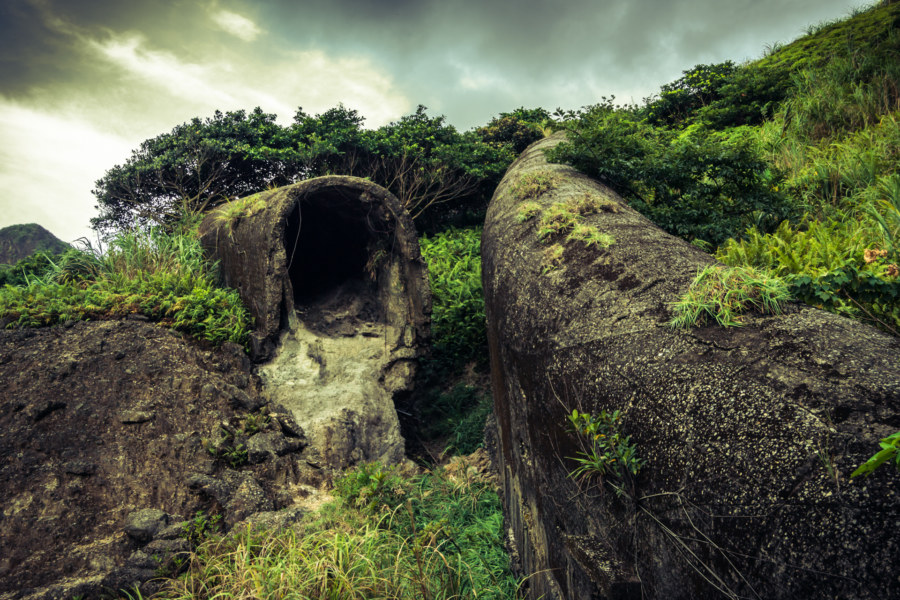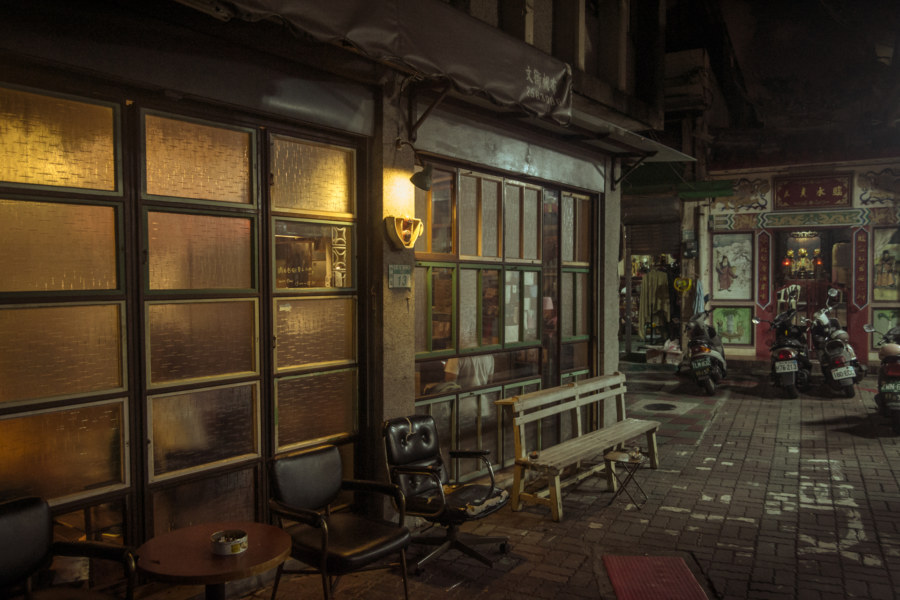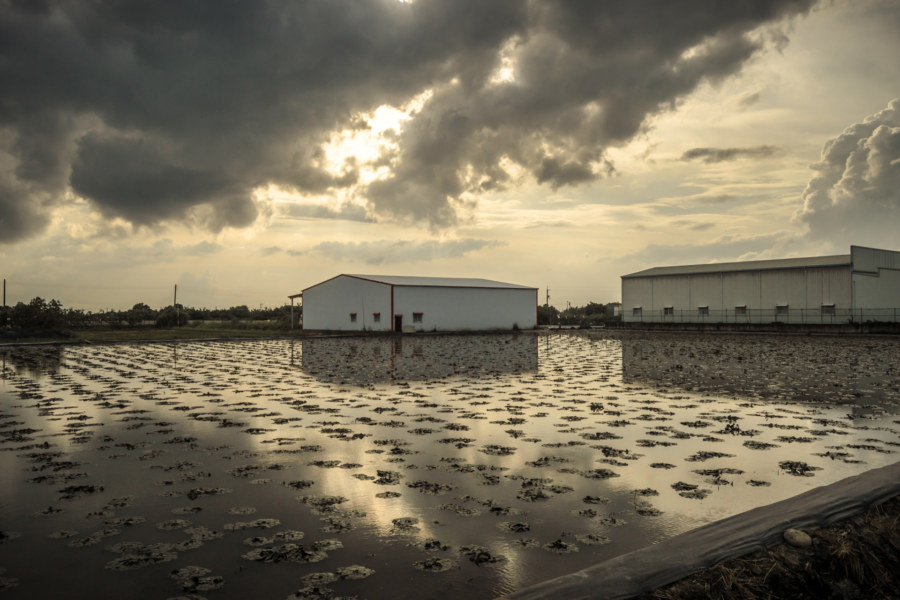Tainan is known throughout Taiwan for its food—but deciding where to eat can be somewhat daunting, especially for anyone who doesn’t very much Chinese. There are literally thousands of restaurants to choose from—in addition to the many night markets scattered around the city. Taiwan, like any highly digital and developed nation, has a vast number of restaurant reviews online, but it isn’t practical to sift through all those reviews without some degree of fluency (or a lot of patience with the shoddy state of machine translation). And, to be honest, I would much rather know how to find good food than read specific restaurant reviews. I didn’t know much about Tainan’s cuisine when I moved there for three months last spring—so with this post I mean to give you the benefit of my experience as a mostly illiterate foreigner attempting to hack the system and eat well in Taiwan’s historic old capital.
Vanilla Garden Minsu 香草園民宿
I was out riding a scooter from Changhua the hot springs resort town of Guanziling in rural Tainan when I noticed a rundown, seemingly abandoned building by the roadside in the mountains of Zhongpu, Chiayi. Stopping to investigate, I discovered a mínsù 民宿 (essentially a bed and breakfast) in the early stages of decay. Initially I had no luck finding out any information about this place but more recently I uncovered its formal name: Dòngzǐjiǎo Vanilla Garden Minsu 凍仔腳香草園民宿. Dongzijiao, apparently famous for its betel nut crop, is the name of the nearest village.
Finn Slough
Founded by Finnish settlers in the late 19th century, Finn Slough is a tiny fishing community located along the marshy banks of the mighty Fraser River in southern Richmond, British Columbia. In the early 20th century the settlers moved the village to its current location, a slough (swamp, pronounced “slew”) at the base of the No. 4 Road on Lulu Island east of Steveston. Most—if not all—of the buildings in Finn Slough were constructed prior to 1950, lack modern plumbing, and rely on wood-burning stoves for heating.
Postcards From Singapore
These photographs were captured on a short two day, three night visit to Singapore in February 2013. I was unable to do more than scratch the surface of this intriguing island city-state on such a brief trip, but I did manage to take a few interesting shots while I was there. Most of my time was spent in Singapore’s historic Chinatown, known in Chinese as Niúchēshuǐ 牛車水 (literally “ox-cart water”), but I also ventured into Little India and the Downtown Core.
The Seeds of Unrest
Part of a mural by Taiwanese artist Liu Tsungjung 劉宗榮 in Dapu village.
Last night I went to Dapu Village in Zhunan, the northernmost township in Miaoli, for a concert and movie screening commemorating the treacherous demolition of four homes last year. The event took place on the former site of Chang Pharmacy, whose owner, Chang Sen-wen (張森文), was later found dead in a drainage ditch in an apparent suicide. This occurred not long after the government razed his home and business to the ground with all his possessions still inside. In a cruel twist of fate the Chang family was served a bill for demolition equalling the financial compensation offered by the government—leaving them with absolutely nothing. Eminent domain may serve the public interest in special circumstances—but this was outright robbery by the state.
The Dapu incident1, in brief: Miaoli magistrate Liú Zhènghóng (劉政鴻, pictured above, at left) ordered the expropriation of 156 hectares of land in Dapu Village in 2009, ostensibly to build a new…
Gushan Village Old Homes 姑山里老屋
I was off the main road in Gūshān Village 姑山里 in Dashu, a hilly rural district in Kaohsiung, when I noticed a row of old buildings next to a small temple. Stopping to investigate, I unslung my camera and snapped a few shots, not quite realizing what I was looking at. My mind was elsewhere—a consequence of two hard days of riding in the tropical summer sun. I was, at the time, heading south to the railway line after making it to Qishan the night before and touring through Meinong earlier in the day. Only later, when I went to develop the photos, did I notice the faint traces of the Japanese rising sun flag in the top right corner of the building pictured above. At one point these stone flags must have been painted bright red, a reflection of Japanese imperial interests in Taiwan.
The Golden Tiger General of Qishan
After saying farewell to Tainan, where I have been living in for the past three months, I set out by bicycle for Meinong today, but only made it as far as neighbouring Qishan. The long stretch of lonely backcountry roads from Guanmiao to Qishan offered no respite from the relentless sun—and without any place to fuel up I ran out of water high up in the hills, a major no-no in this 35 degree heat. When I finally made it into town I was in no state to be going anywhere—and so here I am, sick with heatstroke in a cheap hotel, but not without at least a small spark of adventure coursing through my veins. I rested for most of the evening so I could go out and grab a bite to eat and see at least a little of this historic town before (hopefully) moving on tomorrow.
Changren Waste Flues 長仁廢煙道
The waste flues of Ruifang are an extraordinary sight. The ruins of these massive, crumbling conduits run for miles up the mountainside from the Shuinandong Smelter 水湳洞精鍊廠 and the rest of the abandoned mining complex below. Originally built during the KMT authoritarian era to transport noxious fumes and waste gases away from the refinery—and nearby settlements like Jīnguāshí 金瓜石—these flues are reputedly the longest in the world.
Tainan Working Cafes
Note: this post still receives a fair amount of traffic but it is very out of date. It was only current back in 2014, when it was published. Keep that in mind when reading these recommendations!
What follows is a short list of serviceable working cafes in and around downtown Tainan. What do I mean by a “working cafe”? I mean a cafe where students, freelancers, and remote workers will find the things they need to dig in for an extended period of time and get some work done. My criteria for a good working cafe: decent coffee, the availability of snacks or light meals, comfortable seating, wireless connectivity, unobtrusive music, reasonable prices, long opening hours, welcoming staff, and an ambiance conducive to creative work, especially programming. Of course, it helps if a cafe looks nice too!
A Long Ride From Tainan to Changhua
I have been working very hard these last few weeks—a little too hard, at times. To break the monotony of laying code every day I elected to go for a proper ride yesterday. Since moving to Tainan I haven’t gone on any long rides whatsoever—so I geared up for a day on the road, preparing for almost any eventuality. I had several destinations in mind such as the badlands to the east of the city but struck out to the north on a whim, intending to make it to at least Chiayi City by sundown.
